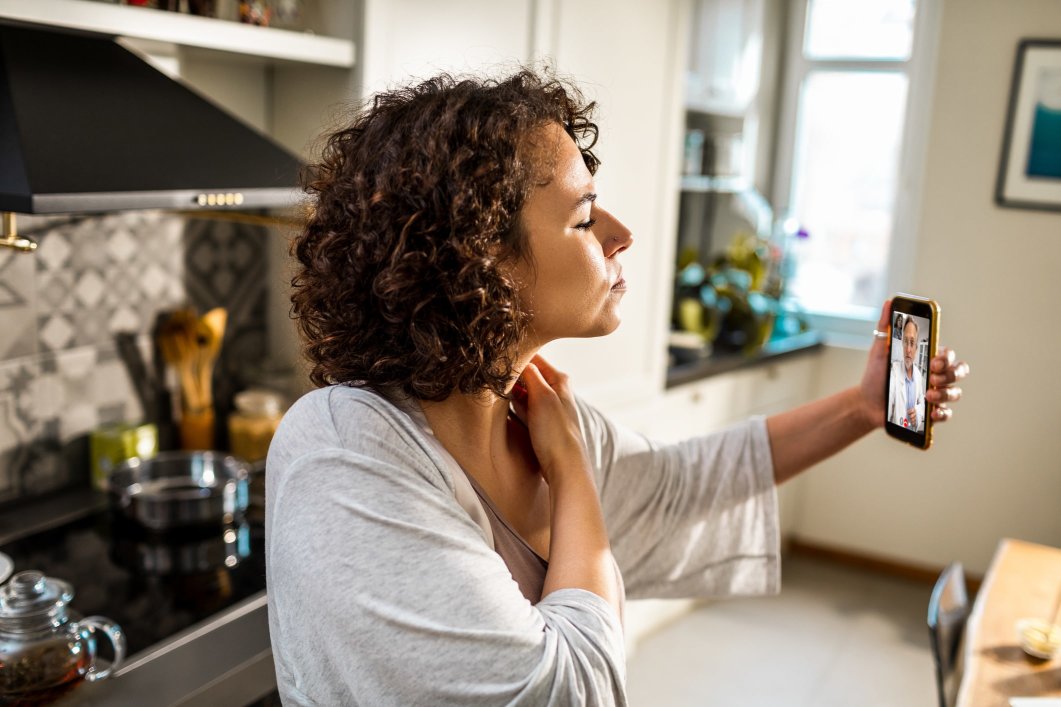
You may have heard the terms “telehealth” and “telemedicine” used quite often lately, but what exactly do they mean?
Telemedicine is a subset of telehealth -- similar, but just a little more specific. Seeing your doctor via video chat, checking lab results from an app, getting long-distance input from a specialist you may not have been able to see otherwise -- telemedicine is revolutionizing the ways you receive healthcare. Accessibility is at its heart, ensuring everyone can receive more equitable treatment.
As a result of COVID, telehealth has become an increasingly popular choice for ensuring patients receive care wherever they are. According to the CDC, from March 2019 to March 2020, telehealth visits in the US increased by 154%. Physicians across many specialties, including family doctors, psychiatrists, and even ER doctors, utilize telehealth to better care for their patients.
That all sounds great, but how does telehealth work? Keep reading to find out!
What Is the Difference Between Telehealth and Telemedicine?
It’s not necessarily a matter of telemedicine vs. telehealth. Rather, the difference between telehealth and telemedicine is that telehealth refers more broadly to any health care services you may receive remotely. Telemedicine falls within this scope but refers only to clinical services received remotely. |
As a patient, when you receive remote care, that’s telemedicine. Seeing a specialist via video call, mobile health apps, and getting a remote consult when you’re in the ER or an urgent care -- those are all examples of telemedicine.
Telehealth, on the other hand, includes any remote training, education, and administrative meetings your physician attends to better care for you.
Now that you know the subtle difference, how does telehealth work? Let’s take a look.
How Does Telehealth Work?
Over the phone, via an app, or website, telehealth allows the patient to securely connect to medical providers, wherever they are. Whether you’re skipping the drive downtown to see your therapist from the comfort of your home or getting a consultation from a specialist halfway across the country, telehealth is all about making healthcare more accessible.
By making the most of technology, telehealth enables people to:
Get lab results from recent tests, request prescription refills, and schedule appointments from anywhere by logging into a secure website called a patient portal.
See their therapist from the comfort of their home via video chat.
Connect with their primary care physician while traveling. Thanks to video chats and web apps, you can still receive integrated care.
Get assessed at one location (like at school or an urgent care) by a physician or nurse via video chat to determine whether they should be transferred to a hospital.
Have an out-of-state specialist much more quickly review charts and records to consult on their care.
Track and upload things like food logs and insulin levels with an app on their phone.
Receive reminders via text and email for annual preventative care like flu shots and dental cleanings.
Download apps to help them track their moods, their symptoms, or their nutritional intake.
Watch educational videos and attend online classes about managing ongoing conditions.
Receive care that may not have otherwise been available to them due to location or lockdown.
What Is a Telemedicine Visit Like?
So, how does telemedicine work, exactly? Your information is always encrypted for your privacy, so to start, you usually need to connect with your medical provider through patient portals like an app or website.
Many telemedicine appointments can also be scheduled and conducted over the phone. Once connected, no matter the entry point, you’ll schedule your appointment via an app. With a date and time set, you’ll want to prepare your setup.
Your “visit” will likely be a video chat with a physician or other medical professional. They will probably have you log into your appointment via phone app, program, or website, so having a reliable computer or phone and internet connection is essential.
Make sure you’ve got a quiet spot set aside where you won’t be interrupted, and have a headset or pair of headphones handy if you’d like privacy.

Is Telehealth Right for Me?
Telehealth incorporates such a wide variety of tools and accessibility options that you may already be benefiting from telehealth without even realizing it!
However, if we’re speaking specifically about things like virtual appointments over in-person ones, here are some factors that may mean telehealth would be a more convenient option for you:
If distance, timing, or transportation is an issue. For example, if your doctor’s office is far away or you live in an area without access to certain services or specialists, telehealth allows providers to review your charts and meet with you without needing to leave your home.
If you’re traveling, telehealth will allow you to connect with your usual healthcare providers.
If you or a loved one is quarantined because of COVID or another illness, telehealth can eliminate the stress of wondering what to do. Virtual appointments ensure that a healthcare provider can still see you.
If you are thinking about therapy, but the idea of going into an office stresses you out, having sessions in your home office or even your bedroom may seem more appealing.
Telemedicine sure is convenient, but it isn’t a cure-all! If you have an emergency or need physical tests like x-rays, you need to see a doctor in person. Don’t let telemedicine replace a necessary trip to an urgent care or emergency room!
How Much Does Telehealth Cost?
Exactly how much telehealth costs depends on several factors, including what service you’re getting, who you’re seeing, and whether or not you have insurance (and what your policy is).
However, a recent study found that the overall net cost savings for patients surveyed were between $19 and $121 per visit, mostly due to avoided emergency room visits.
When considering telehealth, be sure to research individual options. Service to service, costs (and how they’re distributed) can vary greatly. One provider may charge more for prescriptions, while another may have slightly more expensive appointments (but cheaper prescriptions).
Wrapping Up
Telehealth options can make your care more convenient and accessible, often at a little lower price than you may have paid in person. With our simple guide, you’ve already started your telehealth journey, so don’t stop researching! Review what options are available to you, and check your insurance plan to see what telemedicine services are covered.







